At this point in my photography “career” it’s unusual for me to get a new lifer but lately I’ve been on a roll.
I’ve said before that I consider myself to be a bird photographer rather than a birder because I don’t keep the myriad “lists” that birders typically do. That said, I’m always aware when I’m photographing a new (for me) species so I guess I do keep an unofficial list of sorts – one of bird species I’ve photographed. I don’t know the total number on that “list” but I’m keenly aware if I’m photographing a new species. To make my list, certain conditions apply – it must be a positive ID, I must have photos of it and those photos must be of reasonable quality – in other words good enough to be “keepers”. As you’ll see below I sometimes struggle in determining whether or not an image meets those conditions – when an image is of marginal quality it can be extra-tempting to keep it if it’s of a new species.
The first three (and a half) lifers in those eight days were all taken on May 29th and 30th near the border of Idaho and southwest Montana last week.
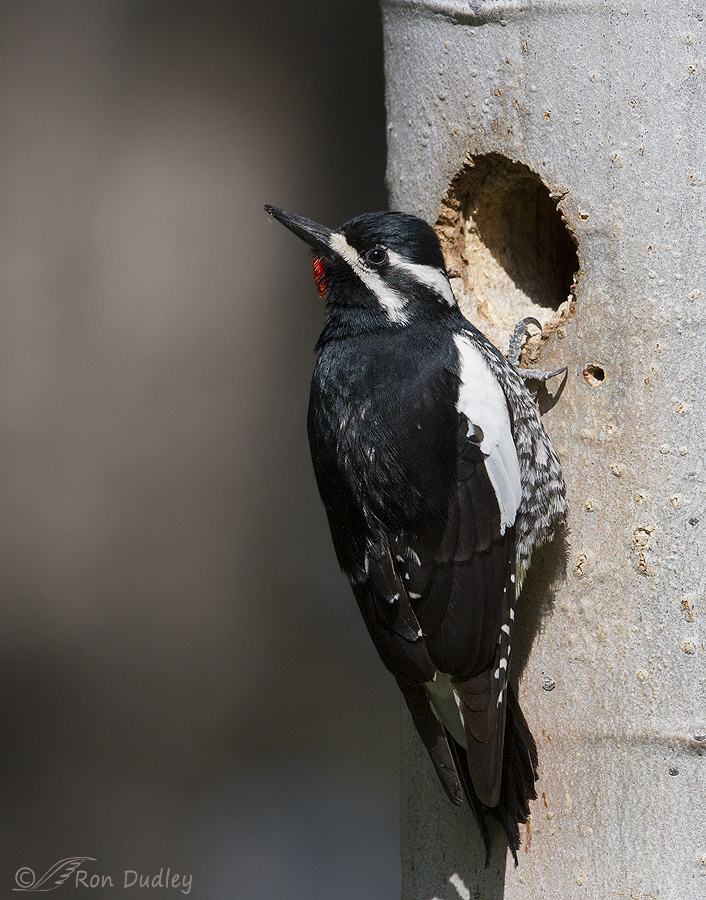
The first on my list of new lifers is the Williamson’s Sapsuckers I posted about recently. This is the male at one of its nest holes in the “glory hole aspen”. I found this pose to be at least slightly interesting because of the atypical head turn.
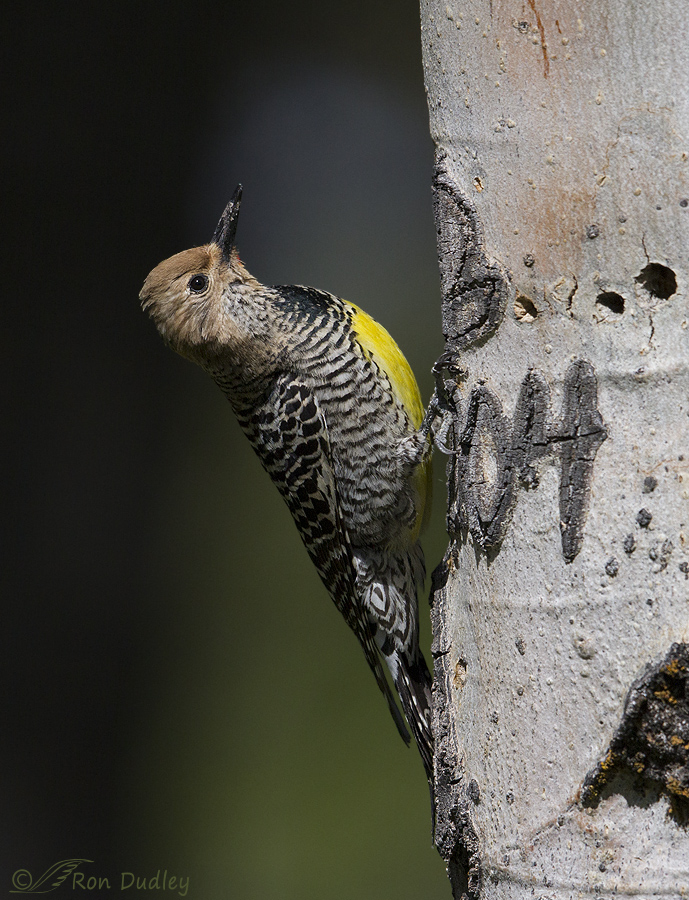
This is the female sapsucker at the location on the tree that was scarred when someone cut their initials and the date in the bark of the tree in 2004. I’ve facetiously counted the sapsuckers as “one and a half” on my list because unlike other woodpeckers the sexes of this species are so very different from each other and I was able to photograph both of them (in reality I’d only count these birds as one species of course).
But there was also a flurry of activity at this aspen from other species and that provided another lifer for me…
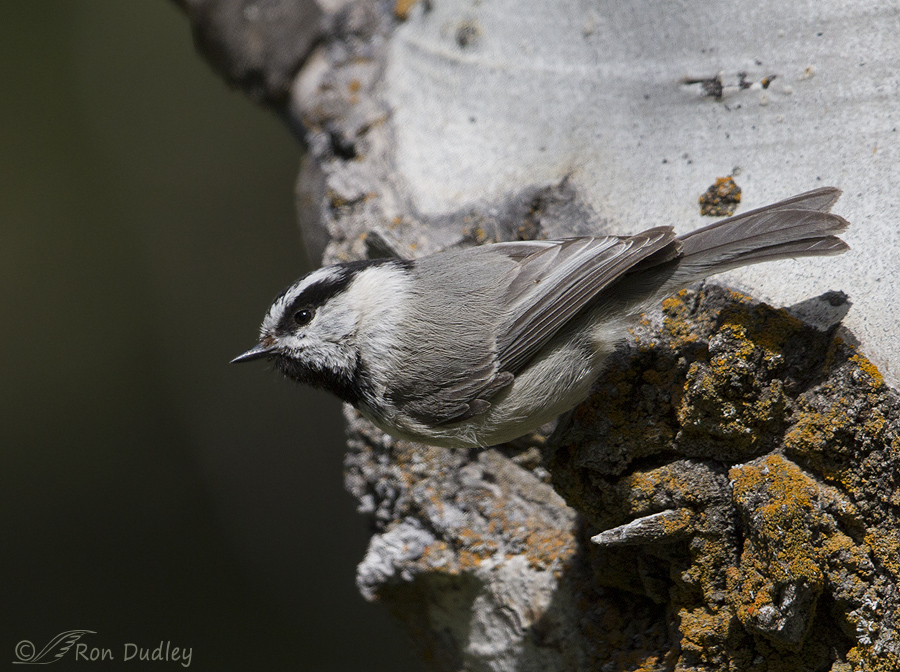
the Mountain Chickadee (note the white “eyebrow” stripe that distinguishes it from the all-black cap of the Black-capped Chickadee). I’m a little surprised that this species was new to my list but I’d never before been able to get images of them good enough to keep.
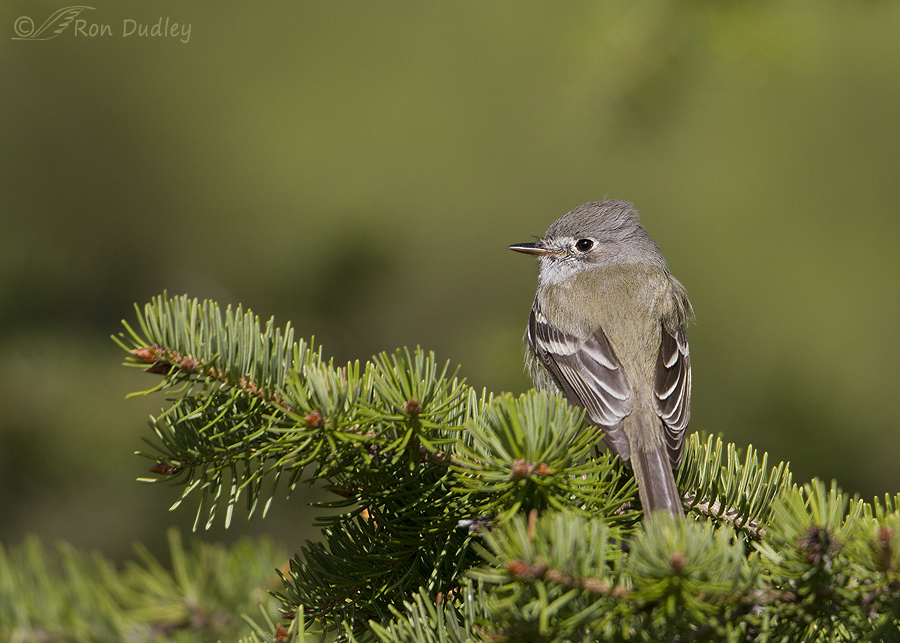
I was delighted to add the feisty Least Flycatcher to my list when this tiny bird flitted into range of my lens and perched on a conifer. This bird was right on the edge of its known breeding territory in northeast Clark County, Idaho.
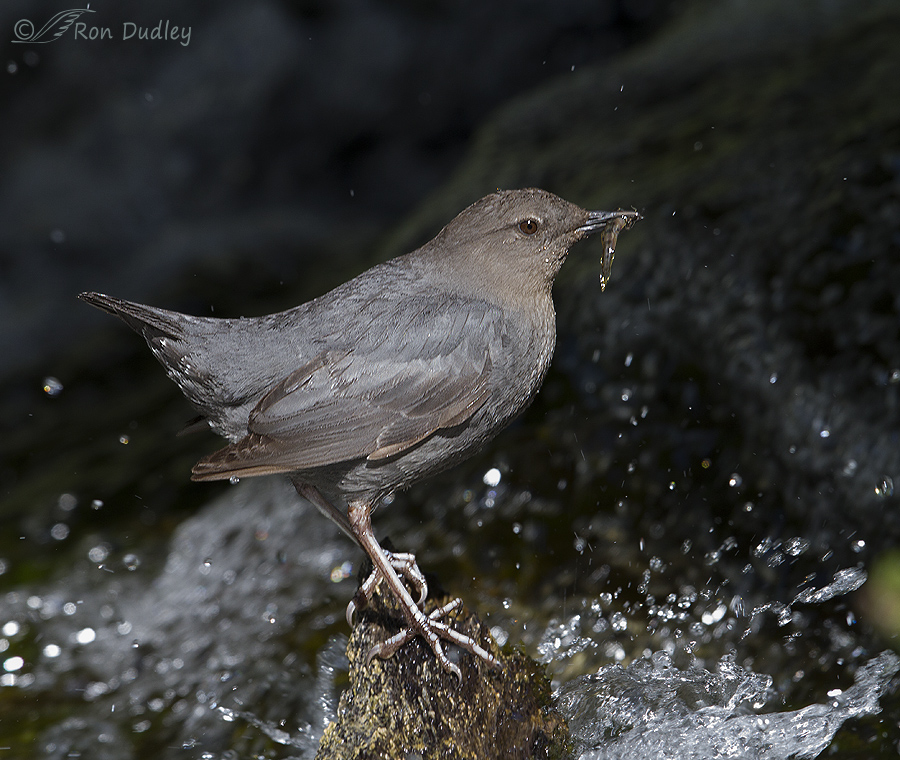
The last new species on my lifer list during those eight days is the American Dipper. I encountered this bird at Cascade Springs on June 5 after my return home to Utah. This image is a perfect example of one that is only marginally a keeper – the image was overexposed in-camera and the head isn’t very sharp (I was handholding my 500mm lens for this image and the lighting was contrasty). In the end I only kept the image because the dipper had prey in its beak and the bird filled most of the frame with only minor cropping.
I thought I’d conclude with an image that’s an example of one of the reasons I consider myself to be a bird photographer rather than a birder (the philosophy of one group is no better than that of the other, they’re only different).
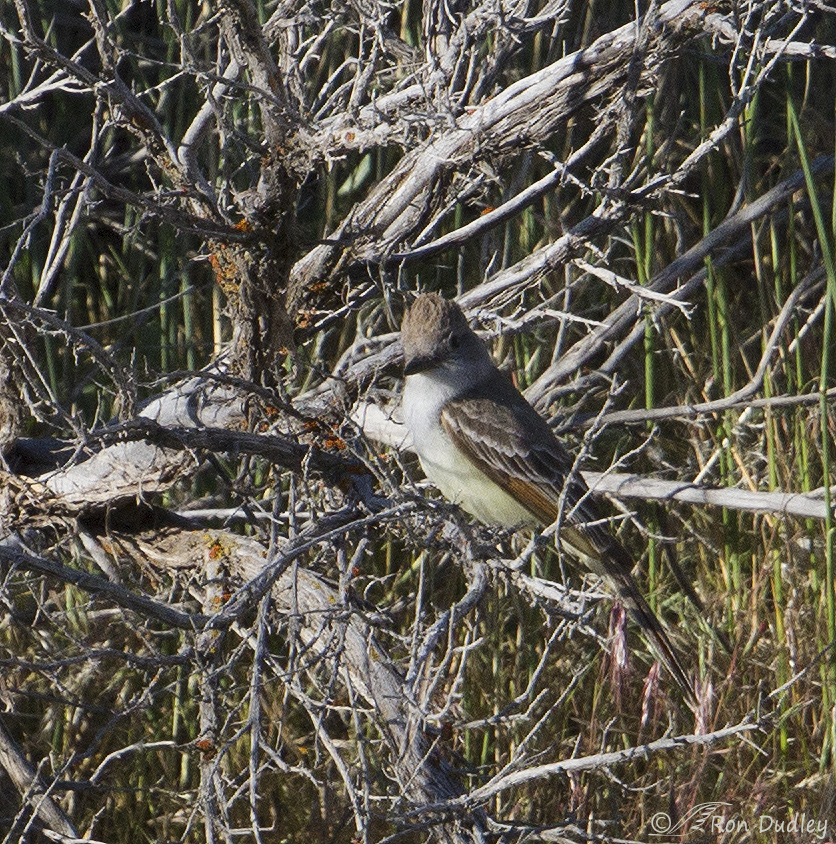
I took this image of an Ash-throated Flycatcher two days ago at the base of the Stansbury Mountains in Utah. It’s a new species for me but the image is of very poor quality, partly because it’s a humongous crop (4% of the original image). If I were a birder this species would make my lifer list (as long as it was a positive ID).
But I’m not and it doesn’t.
Virtually all of my bird photography is done in the intermountain region of Utah, Montana, Idaho and occasionally Wyoming and I don’t deliberately search out new species – my primary goal is photographs of acceptable quality or better. If I traveled to exotic (for me) locations it would be relatively easy to add this many lifers in a short period of time but I thought it was pretty unusual for me to get this many lifers in such a short time span in locales I’ve photographed for years.
Ron


Ron,
I love the Ash-throated flycatcher, the jumble of it’s habitat almost visually obscuring the bird. To me, this picture is an example of what birding is all about…being emersed in the details of where you are, and a bird emerges out of a jumble.
I don’t keep a life list, but I would keep this evocative picture.
As ever, grateful for your work,
SUE
CONGRATS! I CANNOT IMAGINE HOW EXCITING IT WAS TO FIND THAT MANY LIFERS IN SUCH A SHORT PERIOD OF TIME! Thanks for sharing them.
Charlotte
Thanks very much, Charlotte.
Wow! That’s a lot of ‘lifers’ for a short period of time! Clearly an exciting time. I am always interested when the discussion about birding vs. bird photographer or bird watcher comes up. I went on one birding tour at Hueco Tanks, and ended up feeling very frustrated. On the birding tour, everybody was seeing birds way faster than my eyes could focus, and it seemed like every bird was a notch on their belts. That did not sit well with me, because it seems like the people who do that are missing out on the best part of seeing birds – watching their behavior and gaining understanding of who they are. I love seeing new birds (or lizards, or butterflies, or bugs, etc.), but would much rather watch them than try to see how many I can see at one time. There is far more joy (at least for me) in the learning, rather than in creating a long list. I like to be able to remember the birds I’ve seen…
Susan, You have well-described the primary reason I fit best in the “bird photographer” category. Ticking off lists has no appeal for me and I love photography and behaviors. That’s not to say however that some birders aren’t just as interested in behaviors as I am. And I will readily admit that I wish I had the ID skills of some of the better birders…
I, too, wish I had those ID skills…
Ron–how are you enjoying the new rig? Photos look great….
Patty, If by “new rig” you’re referring to the new 500mm lens, I absolutely love it! Much lighter in weight and the image quality and autofocus speed and accuracy is significantly improved.
Beautiful birds, and great shots Ron. I like the picture of the Dipper. We have them here, but I haven’t been able to get that good of a close up yet. Such pretty brown eyes. I like how the water is splashing around the bird.
Dippers are fascinating birds, Jean but the habitat they prefer (rushing shaded waters) sure makes them a challenge to photograph!
Fantastic Ron, Congratulations on both the lifers and the photography!! A life bird is always time for rejoicing, but 5 at one time? That means it is time for a celebration. A drink? Dinner? Or just plain searching for another life bird?
Whether you are a birder or not this discovery was a wonderful experience. Many thanks for sharing it with us!
“That means it is time for a celebration. A drink? Dinner?”
I probably had more than one celebratory drink, Dick. If by “dinner” you mean going out – that’s not for me. I’m not a fan of going out for dinner… Thank you.
The Dipper is an intriguing little bird. Almost wren like with that tail!
Agreed, Arwen – they do somewhat resemble a larger, stockier wren.
Names, shnames. I don’t care whether you call yourself a birder, a bird photographer or a Greater Fast-Fingered Shutter Clicker, you bring lifers, beauty, magic and an education to me. Thank you.
Well said, Elephant’s Child! I couldn’t agree with you more.
What a nice thing to say, Elephant’s Child. Thank you.
Interesting discussion, Ron! Let me start by saying that, as usual, your photos are marvellous, even the Dipper!
I guess I am both a birder and photographer who has been doing both for over three decades, but only recently (2.5 years) started doing “bird photography.” My guideline for keeping shots is not entirely dissimilar to yours, although my standards are not as high! I keep the very best shot(s) that I have of a species until I can get better ones (which reminds me that I must make a radical clean up of my library or my computer will crash). If a shot is really marginal, however, I generally will not use it for my blog or elsewhere unless a story is attached to it or it a lifer for by birding self.
Pierre, I’ll have to admit that I too occasionally keep the “best” shot I have of a species even if it’s a poor one. Often my reason for keeping it is for ID purposes.
Ron, do you have PhotoZoom? Given your interest in image quality, and your needing to photograph from a great distance at times, you may find that (or a similar software program) helpful to retain definition while enlarging a small portion of an image. It can’t perform magic, but it definitely makes a difference.
No, I don’t have it, Alison. I’ll check it out. Thanks.
I wrote “ARE” recording what you see in a defined area. This GD evil IPad chaged it to “aren’t”….GADS!!!
Never fear, Patty. I fixed (edited) the work of the evil Ipad.
I really respect the fact that your photographs are recording what you see in a defined area. That gives your “collection” a very specific value. Congratulations on adding 4 (and 1/2) new birds to your lifer list. I’ve never seen any of these birds and probably never would if it weren’t for your wonderful images. I am very impressed by the amazing symmetry of that perfectly round hole…as an artist, making anything perfectly round ain’t easy!!!
Thank you, Patty. Good eye regarding the symmetry of the hole.
Congratulations, Ron! There’s something about focusing on one area and discovering new treasures that really honors the habitat. By staying in certain regions, you’ve developed an intimacy with that land, and that’s something a long list from frantic traveling simply can’t provide.
I like the way you said that, Alison. Thank you.